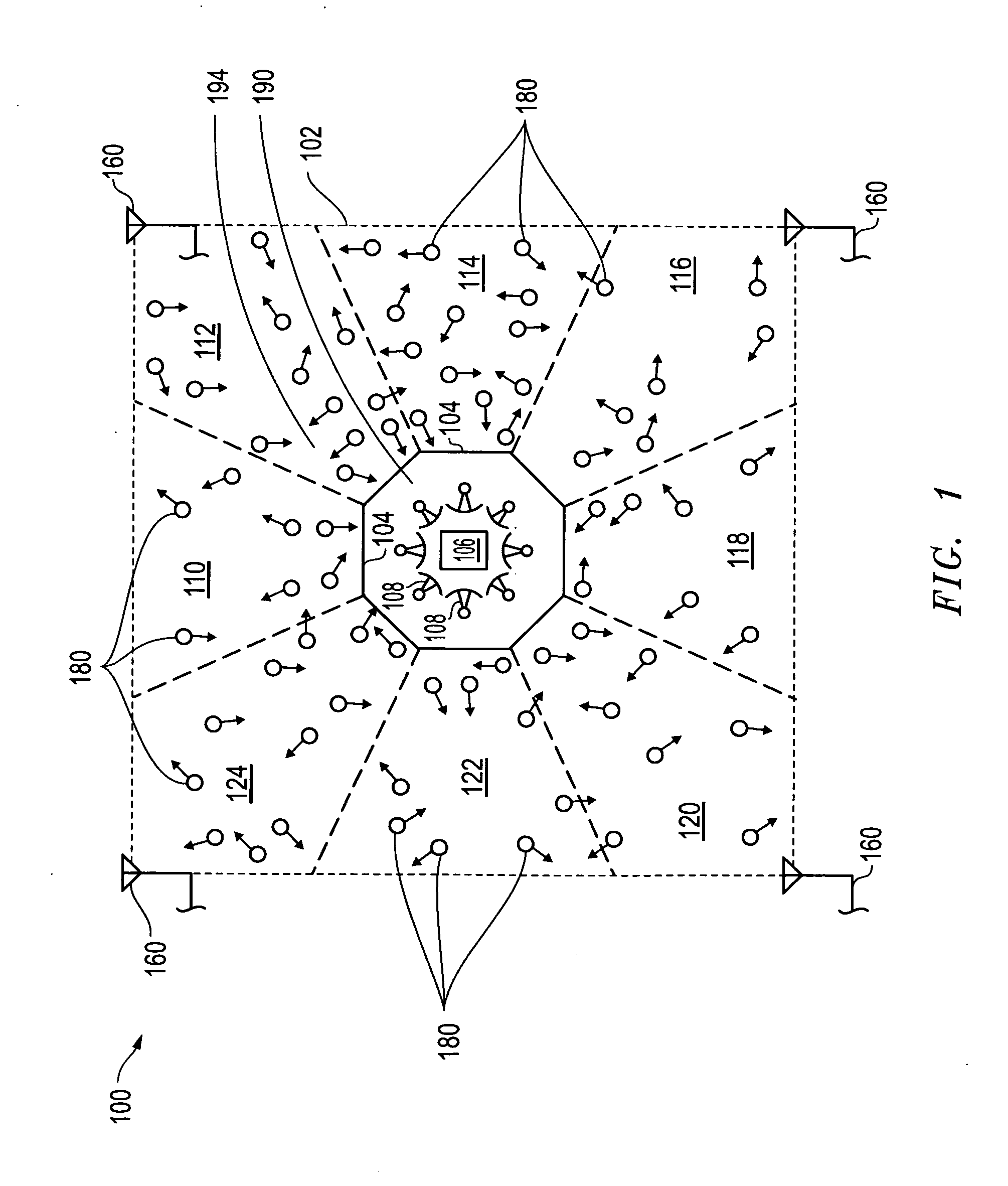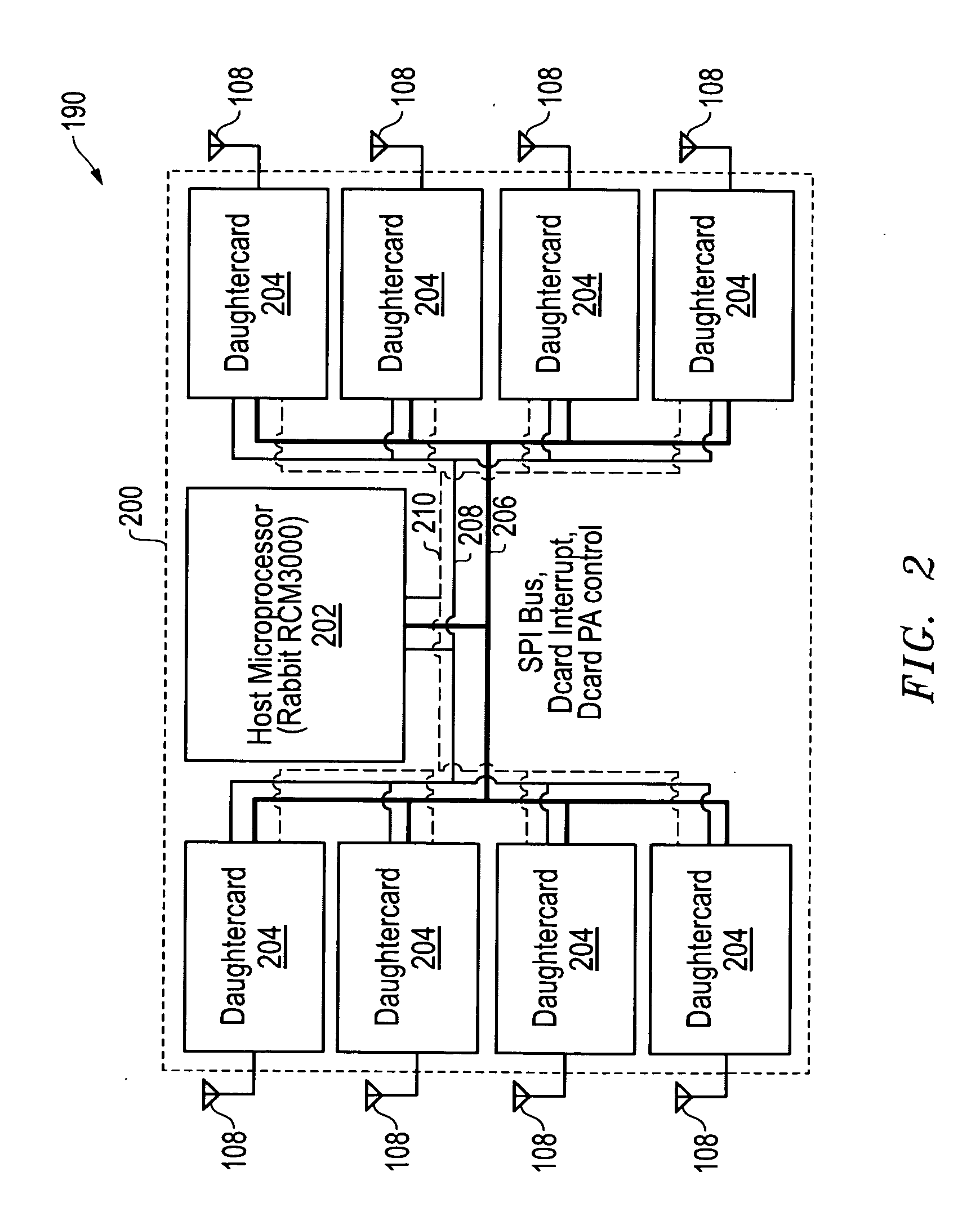Data separation in high density environments
a data communication and high density technology, applied in the field of data communication, can solve the problems of low degree of precision, high cost, and inability to determine the absolute toa accuracy, and achieve the effects of reducing the amount of time, reducing the battery life of the arfid tag, and optimizing power consumption
- Summary
- Abstract
- Description
- Claims
- Application Information
AI Technical Summary
Benefits of technology
Problems solved by technology
Method used
Image
Examples
Embodiment Construction
[0028]FIG. 1 illustrates one exemplary embodiment of an aRFID communication system 100 that includes a master coverage area 194 defined between outer boundary 102 and inner boundary 104 of the system 100. In one embodiment such a master coverage area may be, for example 1 mile by 1 mile square, although other sized master coverage areas (both smaller and larger), and / or other shapes of master coverage areas may be implemented in other embodiments. Although an aRFID system and associated devices are described herein, it will be understood that embodiments of the disclosed systems and methods may also be implemented with passive RFID tags and semi-passive RFID tags, as well as RFID communication systems employing the same.
[0029]As shown in FIG. 1, a remote active RFID interrogator (aRFIDI) system 190 with its corresponding directional signal transmission system (e.g., multiple outwardly facing antenna panels) is positioned within the boundaries of (e.g., in this case substantially at ...
PUM
 Login to View More
Login to View More Abstract
Description
Claims
Application Information
 Login to View More
Login to View More - R&D
- Intellectual Property
- Life Sciences
- Materials
- Tech Scout
- Unparalleled Data Quality
- Higher Quality Content
- 60% Fewer Hallucinations
Browse by: Latest US Patents, China's latest patents, Technical Efficacy Thesaurus, Application Domain, Technology Topic, Popular Technical Reports.
© 2025 PatSnap. All rights reserved.Legal|Privacy policy|Modern Slavery Act Transparency Statement|Sitemap|About US| Contact US: help@patsnap.com



